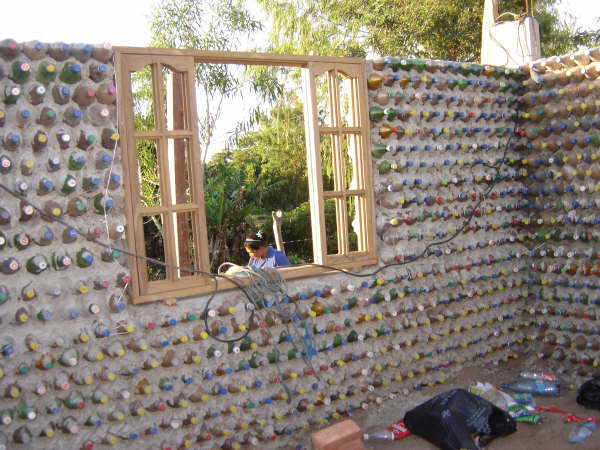TEPIC, Mexico — Tens of thousands of empty plastic bottles could be filled with rubble and earth to build quake-resistant emergency shelters for people made homeless in Mexico’s recent tremors, said architects who are urging people to donate bottles.
Reuters reported that, starting in the shattered town of Jojutla in Morelos state, near the epicenter of last Tuesday’s 7.1 magnitude earthquake, the scheme aims to help locals build cheap shelters big enough for two to four people, made from bottles filled with the debris of their collapsed homes.
“Right now, people are sleeping in the street, in the rubble, in the rain. So we need housing now – we can’t wait for the moment the government decides it’s going to help,” said Ana Vanessa Rendón Zúñiga, one of three architects who set up the Viviendas Emergentes (Emergency Housing) campaign (VIEM).
“There are millions of bottles among the donations of supplies that have arrived… Our plan is to go to the communities and show them how to build these homes,” she added.
Last week’s quake, which shook Mexico City and surrounding states, killed 331 people and damaged 11,000 homes, with many survivors now living in tents or emergency housing.
It followed an 8.1 magnitude tremor that rattled poorer southern states, including Oaxaca and Chiapas, earlier this month, leaving about 100 dead and millions in need of aid.
The campaign’s organizers have asked people to donate empty bottles with caps at collection centers in Mexico City and elsewhere, along with the tools, wire mesh and wood needed to build the homes. About 2,000 filled bottles are needed for each emergency shelter.
The flexibility of plastic bottles means they are four times more resistant to earthquakes than concrete, said Eduardo Garcia Valencia, president of the group Liderazgo Joven (Youth Leadership). It helps builds permanent homes using “bottle bricks”, where bottles are filled with sand and earth.
Many of the homes destroyed in the quakes were of traditional adobe construction, using sun-dried earth and other organic materials.
Working with VIEM, Garcia’s organization plans to convert some temporary homes into permanent dwellings and raise funds to help quake-hit communities build new houses, he said. He calculates it takes up to 15,000 plastic or glass bottles to construct a two-bedroom home.
But changing people’s attitudes toward bottle houses will be key, as some still have concerns about the safety of the buildings, which experts say can also withstand hurricanes.
“We’ve heard comments that they’re not good, that it’s not safe to be in a house of PET,” said Rendón, referring to the material used to make plastic bottles. “But there are many people who have lived in houses like this for 20 years and the houses are still good. It’s a decent way to live.”
Source: reuters.com




